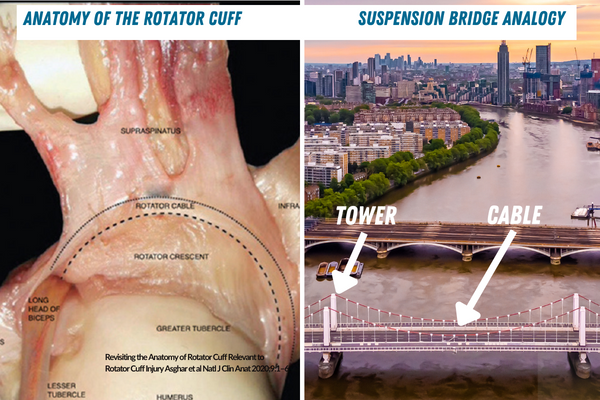Shoulder (Rotator Cuff and Impingement Spectrum)
Core message: Degenerative cuff tears are age‑related adaptive changes; exercise restores function by improving load tolerance and neuromuscular control.
Key evidence:
Kukkonen J et al., BMJ 2014;348:g2056 — Randomized trial showing no significant difference between surgical repair and physical therapy for non‑traumatic supraspinatus tears.
Moosmayer S et al., J Bone Joint Surg Am 2019;101(12):1054‑1060 — Ten‑year follow‑up showing comparable outcomes between primary rehab and surgical groups for small to medium degenerative tears.
Littlewood C et al., J Orthop Sports Phys Ther 2015;45(11):906‑914 — Systematic review demonstrating exercise therapy’s efficacy in reducing pain and improving function in rotator cuff related pain.
Shoulder: Rotator Cuff
Clinical Layer:
Chronic degenerative rotator cuff tears are common findings in aging and are frequently asymptomatic. MRI is a poor predictor of pain and function; exercise is primary for recovery.
Chronobiological Layer:
The shoulder tendon circadian clock directs ECM turnover and tissue homeostasis; tendinopathy is associated with dampened circadian amplitude in peripheral tendon clocks.
Nighttime pain and sleep disturbance in rotator cuff patients reflect disrupted cycling of tissue repair, further degrading ECM quality.
Circadian misalignment (poor morning light, excessive evening blue light) stunts tendon regeneration irrespective of loading.
Why Should I Care?:
Exercise strengthens tissue and improves function, but recovery is timed by your body clock. If your sleep or light exposure is disturbed, tendon repair is slowed even with perfect exercises.

